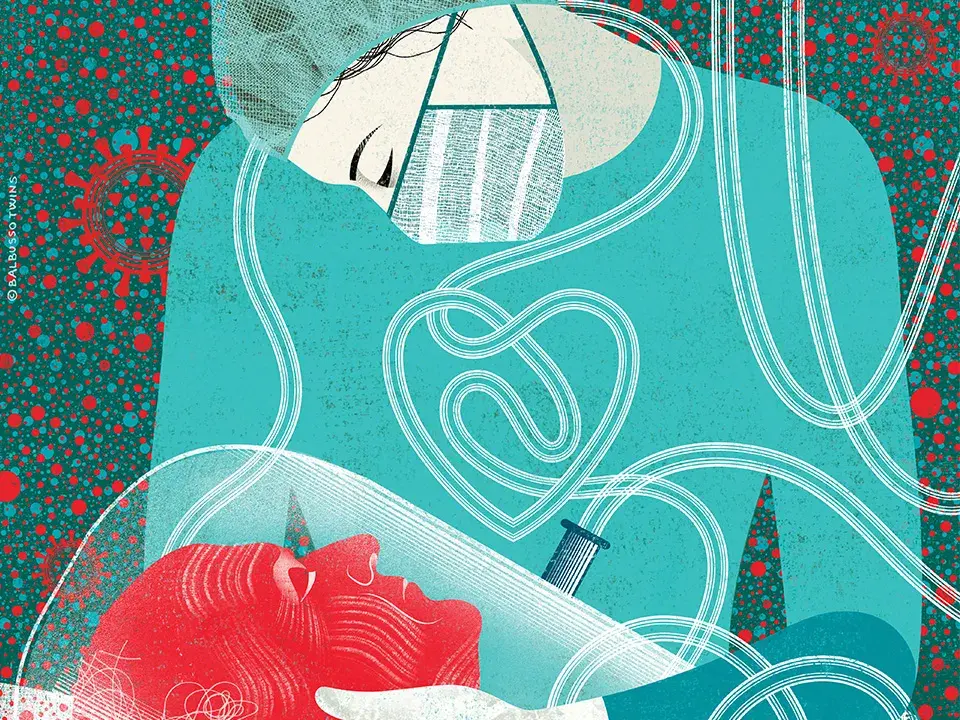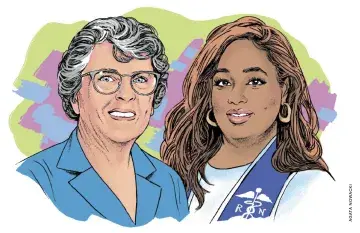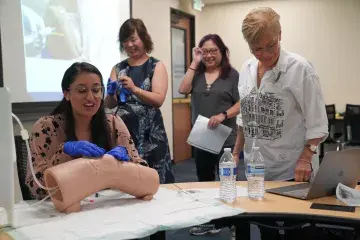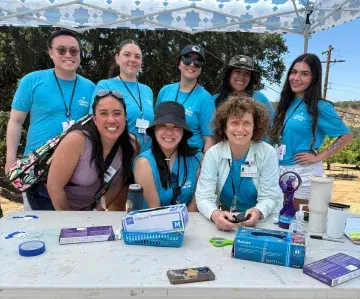What the Pandemic Taught Us

A young patient is in the ER crying from the pain of a headache. A nurse takes her vital signs, asks her to rate the pain on a scale of 1 to 10, and carefully notes a rash on the patient’s chest.
This is a simulation. The “patient” is a manikin programmed to portray the symptoms of a patient with meningococcal meningitis and the “nurse” is a nursing student. Her professor and fellow students are observing the interaction. Simulation learning like this is the future of nurse education. And COVID-19 has pushed us there at an accelerated rate.
When the pandemic ground the world to a halt in March 2020, hospitals were so overwhelmed that our nursing students were shut out of most hospital clinical rotations. At SMU we responded quickly in two key ways: We added more simulation experiences to our courses, and we shifted most of our students’ clinical experiences from the hospital to the community.
Simulations have been a valuable learning tool for years, offering life-like educational experiences that are not always possible with real patients. Nursing professors, for example, can walk students through new experiences without concerns about injury or errors. And students can experience important scenarios they don’t see on their days at the hospital.
Historically, SMU nursing students spent up to one-quarter of their clinical rotation hours in simulations. During COVID-19, that increased to 50 percent under relaxed requirements from the state licensing board—a move that, if made permanent, would benefit nursing education, in my opinion.
More than a year and a half into this pandemic, hospitals are still limiting student nurse access. This is the reason we have also expanded our placements in community clinics with partners like Kaiser Permanente, Veterans Affairs, LifeLong Medical Care, and BANANAS Child Care Referrals and Resources.
Our nursing students are honing their assessment skills, learning about ethics and clinical judgement, and evaluating what environmental challenges might impact a patient’s ability to com- ply with medication management and other preventative treatments. These community clinical rotations allow us even more access to underserved populations and focus nursing students’ mindsets on early detection and prevention, something very important when we consider the social determinants of health and the underserved who are at greatest risk.
Nursing education is just the beginning of our students’ careers. So much more learning happens after graduation. Being a part of advancing nursing edu- cation and working together with our community partners as we move forward is a joy. We are truly training a stellar group of nurses for the future, a future we cannot imagine.


